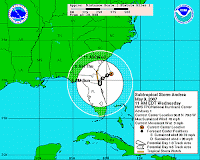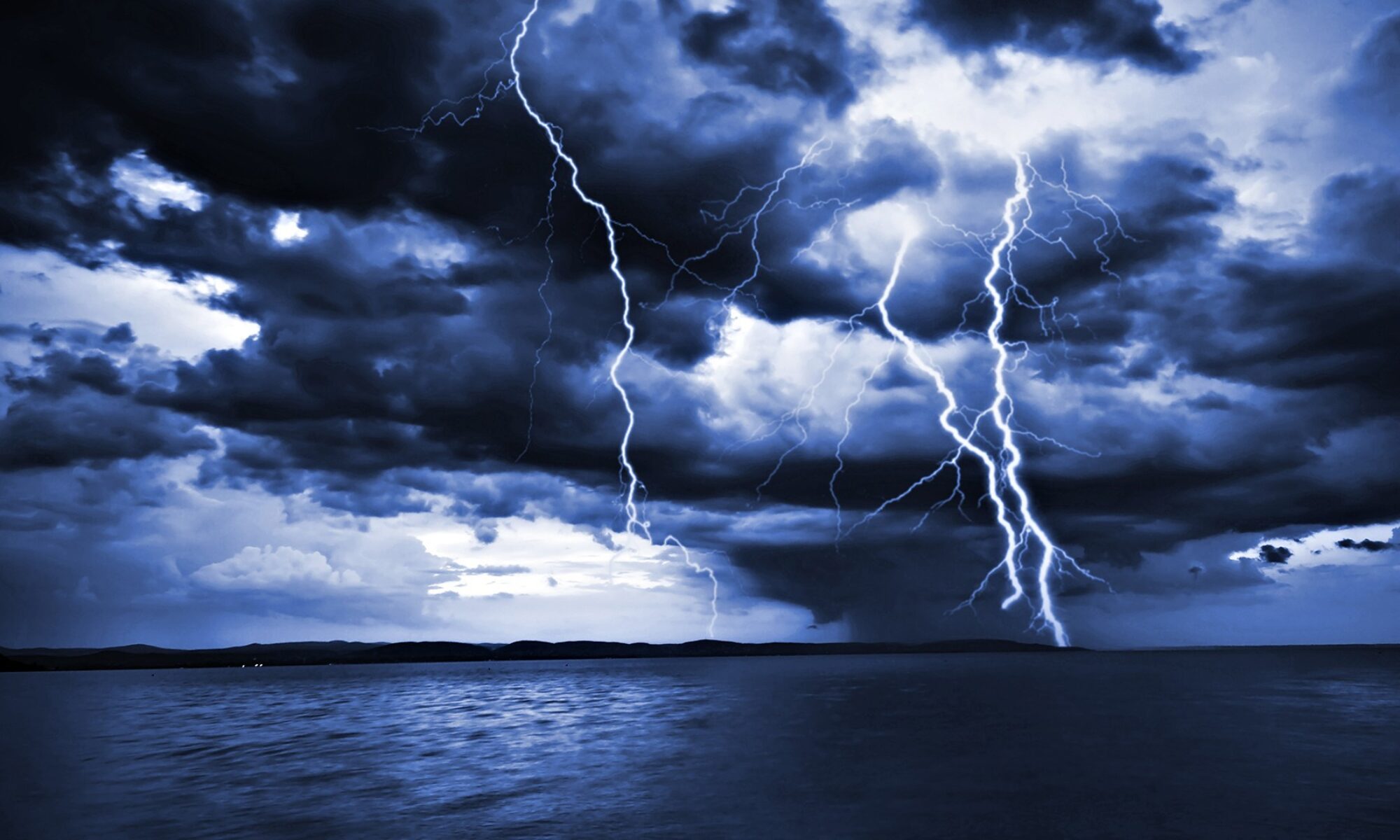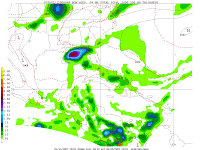Dr. Jeff Masters made this observation:
“The long-range GFS model continues to forecast that the persistent trough of low
pressure that has been present over the Eastern U.S. the past two months will
finally move off, to be replaced by a ridge of high pressure by late July. This
would bring a hurricane steering pattern much like we saw in 2004 and 2005, with
increased risk for the Gulf of Mexico and reduced risk for the U.S. East Coast
from the Carolinas northward. The east coast of Florida would remain at normal
to above normal risk.”What this means to us is that we will probably start seeing more activity in the tropics and should start seeing storms forming and/or entering the Gulf of Mexico towards the end of July and going into August. This does not mean that it’s going to be like 2005 in terms of shear numbers of storms, but the pattern is becoming more favorable for tropical systems.
Still Quiet in the Atlantic Basin
There is a tropical wave approaching the Bahamas that some models are expecting formation into a tropical system that would approach southern Florida on or around the 19th.
There are dry air masses ahead of and behind the tropical wave, so development will be tricky.
While the Atlantic remains fairly quiet, conditions are slowly becoming more favorable for development as we move towards August (the “meat” of our hurricane season).
I expect that the official season analysis will show a reduction in the number of predicted storms, however, I can all but guarantee you all that this season will NOT be as quiet as 2006 was. As always, I hope I am wrong.
Invest 92L – Carribean
Right now, it appears that this system will become a much needed rain maker for the drought plagued state of Florida. At this time, I see no real threat to the Gulf Shores area and doubt that this system will become “Hurricane Barry”.
Of note, Hurricane Season has not begun, yet this is the third Atlantic Invest in less than a month. All data and modelling aside, that is very indicative of things to come.
Last year was an aberration, and I expect this year to see significant activity in the Gulf of Mexico.
Area of Interest
The GFS model here (http://www.nco.ncep.noaa.gov/pmb/nwprod/analysis/namer/gfs/00/index_p24_s_loop.shtml)
hints at the possibility of development of this area of interest in the Carribean. Should this occur, we could have our first hurricane of the season, dubbed “Barry”.
The sheer is still high, so all bets are off at the moment for development of this system.
Tropical Depression Andrea?
Sub-Tropical Storm Andrea
Models vary on possible impact locations and overall track of this storm. At this time the storm is not expected to intensify much further, but on the same coin, it was not expected to become our first named storm.
The official advisory follows:
SUBTROPICAL STORM ANDREA ADVISORY NUMBER 1
NWS TPC/NATIONAL HURRICANE CENTER MIAMI FL
AL0120071100 AM EDT WED MAY 09 2007
…EARLY-SEASON SUBTROPICAL STORM FORMS OFF THE SOUTHEAST U.S.COAST…SATELLITE IMAGERY AND AIRCRAFT DATA INDICATE THAT THE LOW PRESSURESYSTEM OFF THE SOUTHEAST U.S. COAST HAS ACQUIRED SUBTROPICALCHARACTERISTICS.AT 11 AM EDT…1500 UTC…A TROPICAL STORM WATCH HAS BEEN ISSUEDALONG THE SOUTHEAST COAST OF THE UNITED STATES FROM ALTAMAHA SOUNDGEORGIA SOUTHWARD TO FLAGLER BEACH FLORIDA. A TROPICAL STORM WATCHMEANS THAT TROPICAL STORM CONDITIONS ARE POSSIBLE WITHIN THE WATCHAREA…GENERALLY WITHIN THE NEXT 36 HOURS.FOR STORM INFORMATION SPECIFIC TO YOUR AREA…INCLUDING POSSIBLEINLAND WATCHES AND WARNINGS…PLEASE MONITOR PRODUCTS ISSUEDBY YOUR LOCAL WEATHER OFFICE…http://www.nhc.noaa.gov/text/refresh/MIATC…ml/091443.shtml
Invest 90.L Prompting Warnings
 iencing high surf.
iencing high surf.
This storm is not yet considered subtropical, but the NHC has scheduled a hunter flight and it could be designated “Andrea” by tomorrow. The path of the storm as projected by UKMET (see graphic) could bring it into the Gulf of Mexico later this week.
Invest 90.L — An Early Start
Let’s hope that this is not an indication to what we are looking at this season.
Global models are currently coming together for a possible sub-tropical/tropical system forming off of the Carolinas’ coastlines. Data from Station 41001 – (150 NM East of Cape HATTERAS) eports seas at 36+ feet and sustained winds just under 40 knots with stronger gusts. NHC has a floater over the storm, and further review is underway.
At this time, this system poses no threat to the Gulf Coast region. Video of the rotation can be found here: http://www.goes.noaa.gov/GSSLOOPS/ecwv.html
To be honest, this is a very unsual storm, and there could be the outside possibility that this becomes the first named storm of 2007.
2007 Nor’easter
The Lows are converging now. Numerous wind, surf, flood, and marine advisories in effect. This looks to be verifying.
For the conditions, consider it to be like a Cat One Hurricane. Fears that that it and the surge will pass over New York City at high tide. Looks to be every bit as dangerous as “The Perfect Storm” or the “Storm of the Century”. Flooding is a real concern for New York, including Long Island. Pressure is at 968 MB and falling.
One email I got from a resident in New York said “This is not funny any more, and it’s not even here yet.”
One storm tracking in this system is moving at a whopping 105 miles per hour.
Our area remains under a high wind advisory as the actual front moves through today.


